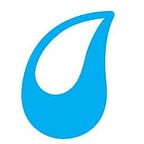Baby clothes, blankets — and razor blades: a look inside maternity bags around the world
As a mum-to-be, it might just be the most important, and the most intimate, bag you’ll ever pack. But what do you put in your maternity bag as your due date draws near?
That’s the question we asked mums around the world as part of our biggest ever appeal, Deliver Life. And while some similarities are remarkable, including baby clothes, blankets and even water bottles, our photos reveal the profound difference it makes knowing you’ll be giving birth with — or without — clean, safe water.
Se’ada, Ethiopia
In Ethiopia, Se’ada is expecting her first baby.
Along with fresh underwear, a loose dress and a cotton throw, her maternity bag contains fabric she can use as a nappy for her new arrival.
She’s also brought a towel, to hold her baby with.
“At home, we share the tap and toilet with our landlords. The toilet looks like it could collapse any minute,” she says. “But I managed somehow.”
“I did my antenatal care here. It’s my first child, so I am scared.” — Se’ada
Hazel, Zambia
Without safe water, midwives don’t just struggle to wash their hands between deliveries.
They also battle against the odds to keep wards and medical instruments clean, not to mention essential items like bedding.
With no safe water at the clinic where she’ll be giving birth in Monze district, mum-to-be Hazel has packed a basin to wash with.
She’s also brought black plastic to lay on during her delivery, to try and reduce the risk from unclean sheets.
“We have a borehole at the clinic but there’s no running water in the maternity ward.” —Hazel
Katy, Australia
In Melbourne, Katy has stuck closely to the list of items the hospital recommends for giving birth, including toiletries, snacks and massage oils to help her relax.
“The hospital has kept me very well informed and I feel I’m in a good position in terms of knowing what to expect,” she says.
“I never question how hygienic a place is, because I know everywhere in Australia has hygienic facilities. The hospital is a very clean and sterile environment.”
“It’s unbelievable that women are dealing with the everyday stresses of pregnancy and the prospect of childbirth, as well as the burden of collecting water.” — Katy
Deanna, USA
Deanna is hoping to give birth naturally, so her maternity bag is full of items to help her deal with the pain of contractions, including a music player, coconut and lavender oils and arnica gel.
“I am very fortunate to live within walking distance of a hospital,” she says.
“Being pregnant certainly heightens your awareness of how lucky we are to have access to great birthing facilities and clean water.”
“You want the best for your baby and it’s devastating to think about dangers such as contaminated water and unhygienic facilities.” — Deanna
Kemisa, Uganda
In Kampala, mum-to-be Kemisa has been attending antenatal classes every Monday.
Her midwife was clear about what she needed to bring with her for the big day.
As well as her own sheets for the bed, she has razor blades for use during her delivery, gloves and cotton wool.
She also has disinfectant for cleaning the room after her baby is born — and a bucket and basin to bathe in and use as an emergency toilet.
“The toilet is outside the ward. It’s clean, but it’s not a toilet with water. I always use the bucket.” — Kemisa
Zaituni, Tanzania
Zaituni arrived at Kiomboi hospital on a motorcycle her husband rented for the journey. She was carrying a basin, a bucket and some clothes.
After a complicated delivery, she developed sepsis — a potentially deadly infection that can be caused by a lack of safe water and an unclean environment.
Luckily, staff at the hospital were able to treat her with antibiotics and secure a blood transfusion, and she recovered. But tragically, not all mums who contract sepsis at Kiomboi have the same experience.
“The baby has no clothes. We are just wrapping her with cloths. When they are dirty my sister washes them. The water is not safe. It looks milky.” — Zaituni
Takako, Japan
In Japan, Takako will receive nappies, pyjamas and clothes for her new baby while they are on the labour ward, as part of the hospital fee she has paid.
The clothes she has packed for her new arrival will be used when they leave the hospital together.
“When I gave birth to my first child, I had to take these items with me. But this time they are included in the fee. It will be helpful, as I won’t have to worry about washing,” she says.
“Mothers can take a shower at the hospital from the day after the delivery. I really feel I’m lucky to give birth in Japan in terms of water and sanitation.” — Takako
Joanna, UK
In the UK, there are two important items in Joanna’s maternity bag: her medical notes and the blanket her mum gave her, to bring her new baby home in.
“The most important thing in the bag is the blanket. It’s the same one my mum brought me home in,” Joanna says.
“My sister suggested bringing something to make it easier to drink water during the labour, so I have packed a water bottle. I will bring it empty — I’m assuming the hospital will have somewhere I can fill it.”
“I enjoyed packing the bag. It’s like a welcome gift, giving the baby the best start possible.” — Joanna
These stories were collected as part of WaterAid’s Deliver Life appeal, which aims to reach 130,000 mums and their families around the world with safe water this winter. Find out more about the appeal and how your gift will transform lives at deliverlife.wateraid.org
